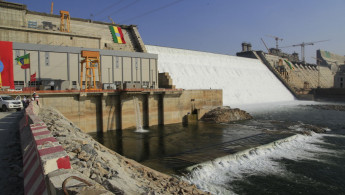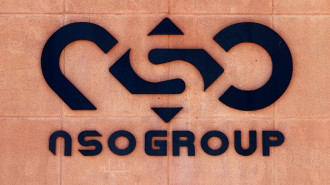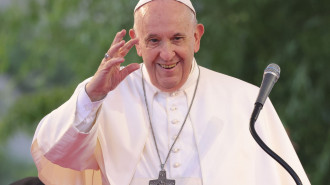Egypt urges Ethiopia compromise over Renaissance Dam amid growing conflict threat to water resources, infrastructure
Egyptian President Abdel Fattah al-Sisi this week called on Ethiopia to “compromise” over the bitterly contested Great Ethiopian Renaissance Dam, leading to speculation about a new approach to the Ethiopian project which Egypt fears could deprive it of life-giving water, amid threats from conflict to water resources, infrastructure as seen in Ukraine's Kakhovka dam this week
Speaking at a press conference during a visit by his Mauritanian counterpart Mohamed Ould Ghazouani last Sunday, Sisi said, “We stressed the importance of encouraging Ethiopia to adopt any compromise solution presented at the negotiating table which preserves its interests without abusing the rights of the downstream countries,” referring to Egypt and Sudan.
Sisi added that the goal was “to reach a legal and binding agreement regarding the filling and operation of the Renaissance Dam”.
Negotiations between Egypt, Ethiopia, and Sudan over the filling and operation of the dam have dragged on for years without any agreement.
While Ethiopia says the dam poses no threat to Egypt and Sudan, it has refused to sign a binding agreement regarding the operation of the dam.
Egypt in particular has been dependent for thousands of years on water from the Nile and fears that the dam could destroy its water supply and agriculture.
A 1959 agreement with Sudan allocates 55.5 billion cubic metres of Nile water to Egypt but Ethiopia refuses to recognise it and Egypt says it will not agree to any reduction of the allocated amount.
40 billion cubic metres of Egypt’s allocated water comes from the Blue Nile, where Ethiopia is building the Renaissance Dam.
Egyptian commentators and politicians have previously hinted at military action to destroy the dam, which Ethiopia says is essential to its future development and prosperity.
There are increasing fears of conflict over water resources in the Middle East and the wider world, exacerbated by climate change. Dams in particular have been targets in conflicts before, as seen recently in the destruction of the Kakhovka dam in Ukraine.
Over the past two decades, dams in conflict zones across the Middle East have been targeted in military attacks. Examples include the Mosul Dam in Iraq, seized by ISIS, the Kunduz Dam in Afghanistan temporarily controlled by the Taliban, and the Tabqa Dam in Syria retaken by the Syrian Democratic Forces. In Yemen, ongoing conflicts have led to attacks on the Marib Dam, while other instances include the Haditha Dam in Iraq, the Ar-Rawdah Dam in Syria, and the Wali Tangi Dam in Afghanistan.
There are also concerns the conflict in Sudan could destabilize the situation further.
However, Egyptian analysts have said that Sisi’s most recent remarks suggest a more conciliatory tone towards Ethiopia.
Mohammed Hafez, an engineering professor specialized in dams, told The New Arab’s sister site Al-Araby Al-Jadeed that Egypt could agree to a plan proposed by former President Donald Trump under which its share of water from the Blue Nile is reduced from 40 billion cubic metres to 37 billion.
Ethiopia had been pushing to have the share reduced to 31 billion cubic metres.






 Follow the Middle East's top stories in English at The New Arab on Google News
Follow the Middle East's top stories in English at The New Arab on Google News


